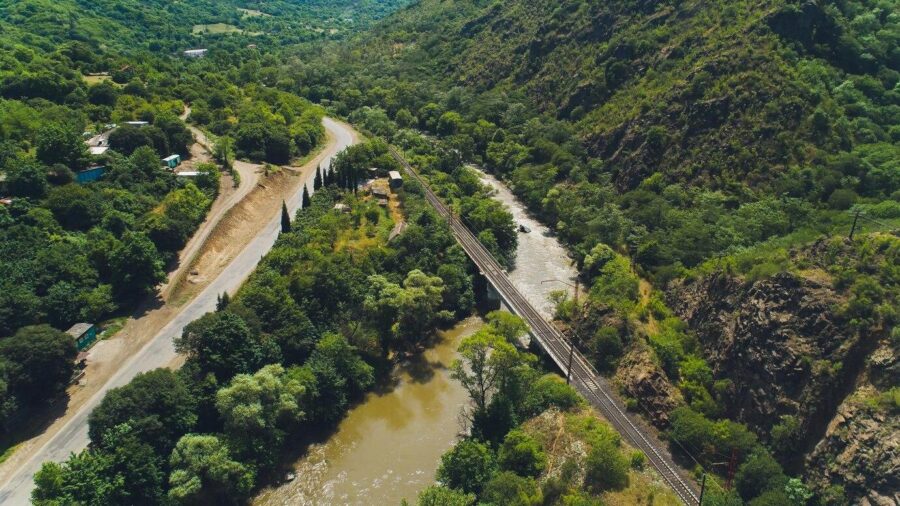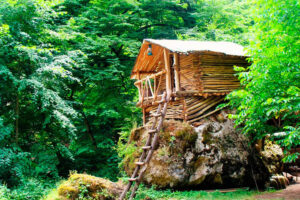Introduction to Alaverdi and the Debed Canyon
Alaverdi, nestled in the northern part of Armenia, is a quaint town that beckons travelers with its unique charm and historical significance. Enveloped by the majestic Debed Canyon, Alaverdi offers a picturesque landscape that captivates visitors with its rugged beauty and serene environment. The town itself has a rich history, dating back to ancient times, when it was a crucial center for mining and metallurgy. Today, remnants of its industrious past are interwoven with the cultural tapestry of the region, offering glimpses into both its historical and modern-day significance.
The Debed Canyon, a natural marvel surrounding Alaverdi, is characterized by its dramatic cliffs and verdant valleys. This stunning formation is a testament to the geological processes that have shaped the region over millennia. The canyon’s diverse ecosystem is home to a variety of flora and fauna, making it a haven for nature enthusiasts and adventure seekers. The winding Debed River, which snakes through the canyon, adds to the area’s allure, providing opportunities for recreational activities such as hiking, bird watching, and photography.
Despite its breathtaking beauty and historical richness, Alaverdi and the Debed Canyon often remain under the radar for many tourists. This relative obscurity adds to the appeal of the area, as visitors can experience the region’s wonders without the crowds that are typical of more popular destinations. As a hidden gem in Armenia, Alaverdi, and the Debed Canyon offer a unique travel experience that combines natural splendor, cultural depth, and a sense of tranquility.
Historical Significance of Alaverdi
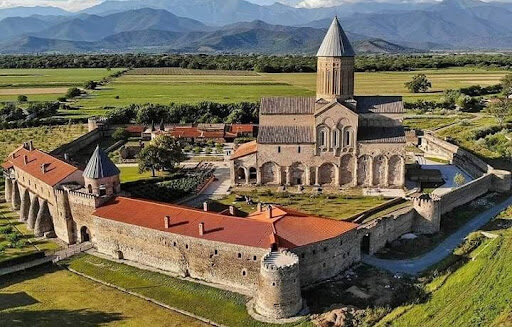
Alaverdi, nestled in the picturesque Debed Canyon of Armenia, boasts a rich tapestry of history that dates back to ancient times. This town has witnessed the ebb and flow of various civilizations, each leaving an indelible mark on its cultural and historical landscape. Alaverdi’s historical journey began as a significant settlement in the ancient kingdom of Urartu, and it continued to flourish through the medieval period and into modern times.
One of the most notable aspects of Alaverdi’s history is its longstanding association with the mining industry. The region’s abundant copper deposits have been exploited since ancient times, propelling the town into prominence. During the Soviet era, Alaverdi became a vital industrial hub, with its copper smelting plant playing a crucial role in the local economy. This industrial heritage is reflected in the town’s architecture, where Soviet-era buildings stand alongside more ancient structures.
Alaverdi is also home to several architectural marvels that testify to its historical and cultural significance. Among these, the ancient monasteries and churches are particularly noteworthy. The Haghpat Monastery, a UNESCO World Heritage site, is a prime example of Armenian religious architecture, dating back to the 10th century. This monastery, along with the nearby Sanahin Monastery, offers a glimpse into the spiritual and scholarly pursuits of medieval Armenia. These monasteries not only served as places of worship but also as centers of learning and culture.
Additionally, the Odzun Church, built in the 5th century, stands as one of Armenia’s oldest and most revered religious sites. The church’s unique architecture and historical significance make it a must-visit for anyone exploring Alaverdi. These ancient landmarks, set against the backdrop of the stunning Debed Canyon, offer a profound insight into the area’s rich heritage.
Alaverdi, with its blend of industrial history and ancient architectural treasures, serves as a testament to Armenia’s enduring cultural and historical legacy. Visitors to this hidden gem in the Debed Canyon will find themselves transported through centuries of history, from ancient Urartu to the present day.
Natural Beauty and Geography of the Debed Canyon
The Debed Canyon, located in the northern part of Armenia, is a striking example of nature’s raw beauty and ecological richness. This canyon, carved by the Debed River, is renowned for its rugged cliffs and luxuriant vegetation, making it a paradise for nature enthusiasts and photographers alike. As the Debed River meanders through the canyon, it creates a series of picturesque landscapes that captivate the senses and offer a tranquil escape from urban life.
The geography of the Debed Canyon is characterized by steep, dramatic cliffs that rise majestically on either side of the river. These cliffs, adorned with a variety of flora, provide a stark contrast to the verdant valley below. The canyon’s unique topography and diverse ecosystems support a wide array of plant and animal species, contributing to its status as a haven for biodiversity. The lush vegetation, ranging from dense forests to open meadows, further enhances the scenic beauty of the area.
Hiking trails crisscross the Debed Canyon, offering visitors numerous opportunities to explore its natural splendor. These trails vary in difficulty, catering to both casual hikers and seasoned trekkers. One of the most popular routes leads to the Sanahin and Haghpat monasteries, both UNESCO World Heritage Sites, which not only offer historical significance but also provide breathtaking views of the canyon below. Other trails wind through hidden valleys and along riverbanks, revealing stunning vistas at every turn.
For those seeking panoramic views, several viewpoints dot the canyon, each offering a unique perspective on its grandeur. These vantage points allow visitors to fully appreciate the scale and beauty of the Debed Canyon, with the river glistening below and the cliffs towering above. Whether you are a nature lover, a photography enthusiast, or simply someone looking for a serene retreat, the Debed Canyon in Armenia presents an unforgettable experience, rich with natural beauty and geographical wonders.
Alaverdi, nestled in the heart of the Debed Canyon, is a region rich in cultural heritage and traditions, offering a unique tapestry woven from diverse influences over the centuries. The cultural landscape of Alaverdi has been shaped by various civilizations, including Armenians, Georgians, Persians, and Russians, each contributing to the area’s distinct character. This amalgamation of cultures is vividly reflected in the local customs, festivals, and daily life of the residents.
One of the most remarkable aspects of Alaverdi’s cultural heritage is its traditional crafts. The region is renowned for its intricate carpet weaving, pottery, and metalwork, skills that have been passed down through generations. Visitors can witness artisans at work, creating beautiful pieces that echo the ancient techniques and artistry of their ancestors. These crafts not only serve as a source of livelihood but also as a means of preserving and celebrating the region’s rich history.
Music and dance are integral to the cultural fabric of Alaverdi. The region boasts a vibrant tradition of folk music, characterized by the use of traditional instruments such as the duduk, zurna, and dhol. These soulful melodies often accompany traditional dances, which are performed with great enthusiasm during local festivals and celebrations. The dances, with their intricate footwork and expressive movements, tell stories of love, heroism, and everyday life, keeping the region’s heritage alive and vibrant.
Festivals in Alaverdi are a testament to the community’s strong sense of identity and pride in their cultural heritage. Among the most celebrated events are the Vardavar, a water festival with pagan origins, and the Harvest Festival, which marks the end of the agricultural season with feasting, music, and dance. These festivals provide an opportunity for locals and visitors alike to immerse themselves in the traditions and customs that define the region.
The influence of various cultures is also evident in the region’s architecture and religious practices. The monasteries of Haghpat and Sanahin, UNESCO World Heritage sites, are prime examples of Armenian ecclesiastical architecture, with their intricate carvings and frescoes. These historical landmarks stand as a testament to the region’s spiritual and cultural legacy, attracting scholars and tourists from around the world.
In essence, Alaverdi and the Debed Canyon offer a rich cultural experience that reflects the area’s diverse heritage. The preservation of traditional crafts, music, dance, and festivals ensures that the cultural legacy of this hidden gem in Armenia continues to thrive for future generations to appreciate and enjoy.
Iconic Monasteries and Architectural Marvels
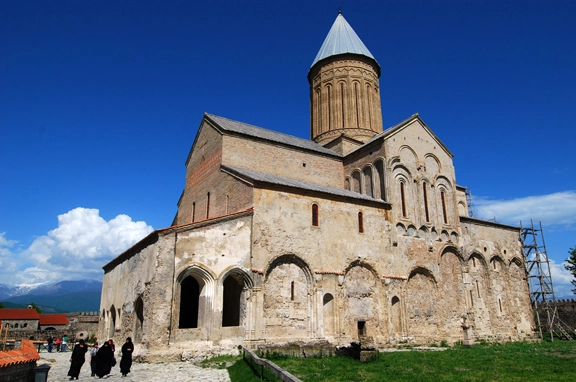
Nestled in the Debed Canyon, Alaverdi is home to a multitude of architectural masterpieces that reflect Armenia’s rich cultural and historical heritage. Among the most significant are the Sanahin and Haghpat monasteries, both of which are UNESCO World Heritage sites. These monasteries stand as testaments to the region’s medieval architectural prowess and spiritual devotion. Constructed between the 10th and 13th centuries, Sanahin and Haghpat feature intricate stone carvings, frescoes, and khachkars (cross-stones) that continue to captivate visitors. Their strategic location on the slopes of the canyon offers not only a serene atmosphere for contemplation but also breathtaking views of the surrounding landscape.
Sanahin Monastery, founded in the 10th century, is renowned for its educational and scholarly contributions during the Middle Ages. The complex includes a series of churches, chapels, and a library, each adorned with elaborate decorations that depict religious and historical themes. Haghpat Monastery, located a short distance from Sanahin, is equally impressive. It is particularly noted for its harmonious design, combining elements of Byzantine and traditional Armenian architecture. The main church, Surb Nshan, showcases a unique mix of styles that exemplify the artistic achievements of the period.
In addition to Sanahin and Haghpat, Alaverdi boasts other remarkable structures such as the Odzun Church and the Kobayr Monastery. The Odzun Church, dating back to the 5th century, is one of the oldest basilicas in Armenia. Its distinctive dome and detailed reliefs provide insight into early Christian art and architecture. Meanwhile, the Kobayr Monastery, perched on a cliffside, offers an awe-inspiring setting that complements its beautiful frescoes and inscriptions. This 12th-century monastery is a hidden gem, often overlooked but rich in historical and cultural significance.
Exploring these architectural marvels allows visitors to delve into the past and appreciate the enduring legacy of Armenian craftsmanship and spirituality. Each site in Alaverdi and the Debed Canyon not only enhances the region’s allure but also serves as a crucial link to understanding Armenia’s profound historical narrative.
Outdoor Activities and Adventure Opportunities
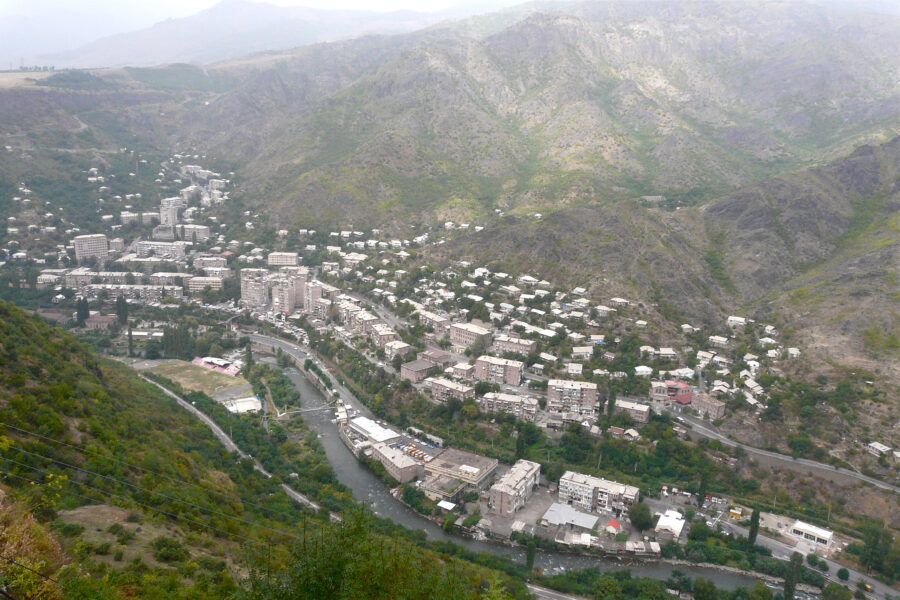
The Debed Canyon in Armenia offers a multitude of outdoor activities and adventure opportunities for visitors looking to immerse themselves in the region’s natural beauty. With its rugged terrain and breathtaking landscapes, the canyon is a haven for outdoor enthusiasts and adventure seekers alike.
One of the most popular activities in the Debed Canyon is hiking. The region boasts numerous trails that cater to various skill levels, from easy walks suitable for families to challenging treks for experienced hikers. The Sanahin and Haghpat monasteries, both UNESCO World Heritage Sites, can be reached through scenic trails that offer stunning views of the canyon and its surroundings. For those interested in a more intense experience, the hike to the Akhtala Fortress provides both a historical journey and a physical challenge.
Rock climbing is another thrilling activity available in the Debed Canyon. The canyon’s cliffs and rock formations create the perfect environment for climbers of all levels. Local adventure companies offer guided rock climbing tours, ensuring that even beginners can safely enjoy the sport. These companies provide all necessary equipment and expert guidance, making it an accessible activity for all.
Bird watching is a tranquil yet exciting pastime in the Debed Canyon. The region’s diverse ecosystems support a wide variety of bird species, making it a prime location for ornithologists and bird enthusiasts. Guided bird watching tours are available, led by knowledgeable local guides who can point out the best spots and help identify the various species found in the area.
Exploring caves is another unique adventure opportunity in the Debed Canyon. The canyon is home to several caves that can be explored with the help of local guides. These excursions often provide insights into the geology and history of the region, offering a fascinating glimpse into the natural world beneath the surface.
For those interested in guided tours and adventure activities, local companies such as Debed Canyon Adventures and Armenian Outdoor provide a range of options. These companies prioritize safety and ensure that all activities are conducted with the necessary precautions. Tourists are advised to wear appropriate clothing and footwear, stay hydrated, and follow the guidance of their tour leaders to ensure a safe and enjoyable experience in the Debed Canyon.
Local Cuisine and Gastronomy

Alaverdi, nestled in the heart of the Debed Canyon, offers a unique culinary experience that is deeply rooted in Armenian traditions and influenced by neighboring regions. The local cuisine is characterized by its rich flavors, fresh ingredients, and time-honored recipes passed down through generations. Visitors to Alaverdi can indulge in a variety of traditional Armenian dishes that showcase the region’s agricultural bounty and culinary heritage.
One of the must-try dishes in Alaverdi is khorovats, a traditional Armenian barbecue made with marinated meat, usually lamb or pork, skewered and grilled over an open flame. Another local favorite is dolma, which consists of grape leaves stuffed with a savory mixture of rice, minced meat, and herbs. For a taste of the region’s rustic charm, try harissa, a hearty porridge made from wheat and slow-cooked meat, often enjoyed during festive occasions.
The influence of neighboring regions is evident in the diverse array of flavors found in Alaverdi’s cuisine. Georgian spices and herbs, as well as Middle Eastern ingredients, have found their way into local dishes, creating a delightful fusion of tastes. Lavash, the traditional Armenian flatbread, is a staple at every meal and is often served with an assortment of cheeses, fresh vegetables, and herbs.
For those looking to explore the local food scene, Alaverdi offers several popular restaurants and cafes where visitors can sample authentic Armenian flavors. Vanatun Monastery Restaurant is renowned for its traditional cuisine and stunning views of the Debed Canyon. Odzun Restaurant offers a cozy atmosphere and a menu featuring local specialties. Additionally, the Alaverdi Food Market is a bustling hub where visitors can purchase fresh produce, homemade cheeses, and other local delicacies.
Food enthusiasts will also find various food festivals and culinary tours in Alaverdi, providing an immersive experience into the region’s gastronomic culture. The annual Dolma Festival celebrates the beloved stuffed grape leaves dish with cooking demonstrations, tastings, and competitions. Culinary tours often include visits to local farms, wineries, and traditional bakeries, offering a hands-on experience of Armenian culinary traditions.
Travel Tips and Practical Information
Traveling to Alaverdi and the majestic Debed Canyon offers an unforgettable experience, but it is essential to plan effectively to ensure a smooth trip. The region is accessible by various means, with the most popular route being a drive from Yerevan, Armenia’s capital, which takes approximately 3.5 hours. Alternatively, travelers can opt for a train journey, offering scenic views along the way, or utilize intercity buses for a budget-friendly option.
The best time to visit Alaverdi and Debed Canyon is during late spring through early autumn, specifically from May to October. During these months, the weather is mild and conducive to outdoor activities. Summer is particularly pleasant, featuring warm temperatures and lush landscapes perfect for exploring the canyon’s trails and historical sites.
Accommodations in Alaverdi range from budget-friendly guesthouses and hostels to mid-range hotels and more luxurious boutique stays. Notable options include the Iris B&B Guesthouse, which offers a cozy and welcoming atmosphere, and the Tufenkian Avan Dzoraget Hotel, known for its elegant setting and excellent services. It is advisable to book accommodations in advance, especially during peak travel seasons.
Getting around Alaverdi and Debed Canyon can be managed through local taxis, which are relatively affordable. Renting a car is also an option for those who prefer more flexibility in their travel plans. While public transportation within the region is limited, it can be useful for reaching specific points of interest.
Understanding local customs and language can greatly enhance your travel experience. Armenian is the official language, but many locals, especially younger generations, speak English and Russian. It is courteous to learn a few basic Armenian phrases as a sign of respect. The local currency is the Armenian Dram (AMD), and it is advisable to carry some cash, as not all establishments accept credit cards.
Travelers should be aware of any travel advisories and safety considerations. While Armenia is generally safe for tourists, it is always prudent to stay informed about the current situation. Standard travel precautions, such as safeguarding personal belongings and being cautious in unfamiliar areas, are recommended.
By following these travel tips and practical information, visitors to Alaverdi and Debed Canyon can look forward to a memorable and enjoyable journey through one of Armenia’s hidden gems.

